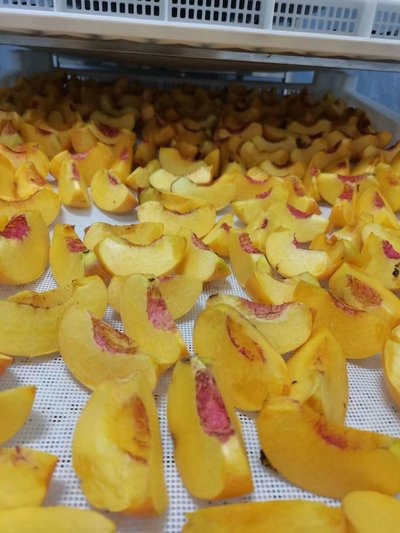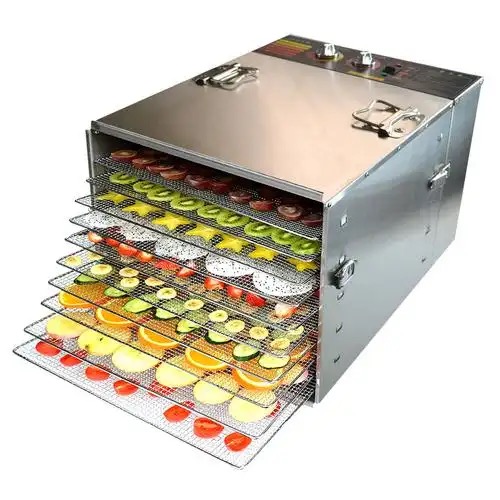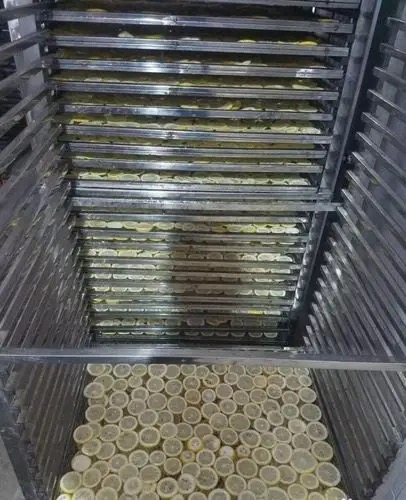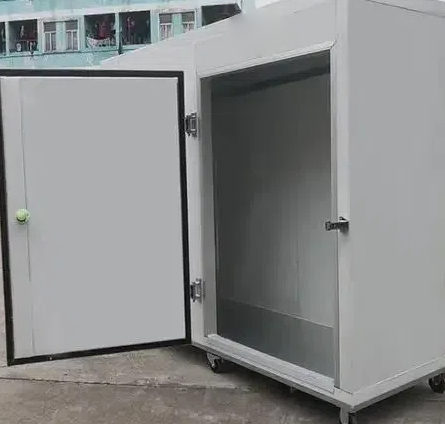
Content Menu
● What is a Food Dryer?
● Benefits of Using a Food Dryer
● How Does a Food Dryer Work?
>> Types of Food Dryers
● Key Features of Food Dryers
>> 1. Temperature Control
>> 2. Timer Function
>> 3. Airflow Design
>> 4. Tray Material
>> 5. Energy Efficiency
● Comparing Food Dryers with Aldi Heat Pump Dryer
>> Energy Efficiency Comparison
● Tips for Using a Food Dryer Effectively
● Common Mistakes When Using Food Dryers
● Creative Uses for Dried Foods
● Conclusion
● Frequently Asked Questions
>> 1. What foods can I dry using a food dryer?
>> 2. How long does it take to dry foods?
>> 3. Can I use my oven instead of a food dryer?
>> 4. How do I know when my food is fully dried?
>> 5. Is it safe to dry meat in a food dryer?
Food dryers, also known as dehydrators, are essential appliances for preserving food, enhancing flavors, and creating healthy snacks. In this article, we will explore the various aspects of food dryers, focusing on their features, benefits, and how they compare to other drying methods. We will also touch on the Aldi heat pump dryer as a point of comparison in terms of energy efficiency and technology.

What is a Food Dryer?
A food dryer is an appliance designed to remove moisture from food items through controlled heat and airflow. This process inhibits the growth of bacteria, yeast, and mold, allowing food to be stored for longer periods without spoilage. Food dryers come in various forms, including electric dehydrators and heat pump dryers, which utilize advanced technology to achieve optimal results.
Benefits of Using a Food Dryer
1. Preservation of Nutrients: Unlike canning or freezing, drying preserves most of the nutrients in fruits and vegetables. This method retains vitamins and minerals while extending shelf life.
2. Enhanced Flavors: Drying concentrates the flavors of fruits and herbs, making them more intense and enjoyable. Dried fruits can be used in baking or as healthy snacks.
3. Healthy Snacking: Homemade dried snacks are free from preservatives and added sugars found in commercial products. This makes them a healthier alternative for snacking.
4. Cost-Effective: Investing in a food dryer can save money in the long run by allowing you to buy seasonal produce in bulk and preserve it for later use.
5. Versatility: Food dryers can be used for a wide range of items, including fruits, vegetables, meats (jerky), herbs, and even flowers for potpourri.
6. Convenience: With a food dryer at home, you can easily prepare snacks or ingredients whenever you want without relying on store-bought options that may contain additives.
7. Sustainability: By using a food dryer to preserve excess produce from your garden or local farmer's market, you reduce food waste and contribute to a more sustainable lifestyle.
How Does a Food Dryer Work?
Food dryers operate by circulating warm air around the food items placed on trays. The heat evaporates moisture from the food while the airflow helps carry it away. This method ensures even drying and prevents the growth of bacteria.
Types of Food Dryers
1. Electric Dehydrators: These are standalone units that use electric heating elements to generate heat. They often come with multiple trays for drying different foods simultaneously.
2. Heat Pump Dryers: Similar to those used for laundry, heat pump dryers recycle air within the unit, making them energy-efficient. They can be used for both foods and laundry, offering versatility.
3. Solar Dehydrators: Utilizing solar energy, these dehydrators are eco-friendly but depend on weather conditions for effective drying.

Key Features of Food Dryers
1. Temperature Control
Most food dryers come with adjustable temperature settings to accommodate different types of foods. For example, fruits may require lower temperatures than meats to prevent cooking rather than drying.
2. Timer Function
A built-in timer allows users to set drying times according to the type of food being dried. This feature ensures that food is not over-dried or under-dried.
3. Airflow Design
The design of the airflow system is crucial for even drying. Some models feature horizontal airflow that circulates air evenly across all trays, while others may have vertical airflow.
4. Tray Material
Trays can be made from various materials such as plastic or stainless steel. Stainless steel trays are more durable and easier to clean but may come at a higher cost.
5. Energy Efficiency
Modern food dryers are designed to consume less energy compared to traditional methods like ovens or stovetops. Heat pump technology further enhances energy efficiency by recycling air.
Comparing Food Dryers with Aldi Heat Pump Dryer
While Aldi's heat pump dryer is primarily designed for laundry purposes, its technology offers insights into energy efficiency that can be applied to food drying as well. The Aldi heat pump dryer utilizes a closed-loop system that recycles air within the unit, significantly reducing energy consumption compared to conventional dryers.
Energy Efficiency Comparison
| Feature | Food Dryer | Aldi Heat Pump Dryer |
| Energy Source | Electric | Electric with Heat Pump Technology |
| Average Energy Rating | Varies (typically lower) | High (6-star average rating) |
| Operational Cost | Lower than ovens | Lower than vented dryers |
| Moisture Removal Method | Air circulation | Air circulation with recycling |
Tips for Using a Food Dryer Effectively
1. Preparation: Wash and cut food into uniform sizes for even drying.
- For fruits like apples or pears, consider slicing them into thin pieces for quicker drying.
- Blanching vegetables like broccoli or carrots before drying can help preserve color and nutrients.
2. Blanching: For certain vegetables, blanching before drying can help preserve color and flavor.
- Blanching involves briefly boiling vegetables followed by plunging them into ice water to halt cooking.
- This step is especially important for green vegetables like peas or green beans.
3. Storage: Once dried, store food in airtight containers in a cool, dark place to maintain freshness.
- Glass jars or vacuum-sealed bags work well for storage.
- Label containers with dates so you can keep track of freshness.
4. Experimentation: Try different combinations of spices or marinades on meats before drying for enhanced flavors.
- Marinating meats overnight before dehydrating can add depth to jerky.
- Consider using herbs like rosemary or thyme on vegetables for added flavor.
5. Regular Cleaning: Keep your dryer clean by wiping down surfaces after each use to prevent cross-contamination.
- Disassemble trays and wash them with warm soapy water after each use.
- Regular maintenance ensures your dehydrator functions efficiently over time.
Common Mistakes When Using Food Dryers
While using a food dryer can be straightforward, there are common mistakes that users should avoid:
1. Overloading Trays: Placing too much food on the trays can restrict airflow and lead to uneven drying.
2. Ignoring Temperature Settings: Not adjusting temperature settings based on the type of food can result in poorly dried products.
3. Not Monitoring Drying Times: Failing to check on your food periodically can lead to over-drying or burning certain items.
4. Improper Storage: Storing dried foods improperly can lead to moisture absorption and spoilage.
5. Neglecting Pre-Treatment: Skipping steps like blanching or soaking in lemon juice can affect flavor and color retention in certain foods.
Creative Uses for Dried Foods
Dried foods offer versatility beyond simple snacking; here are some creative ways to incorporate them into your meals:
1. Trail Mixes: Combine dried fruits with nuts and seeds for a nutritious snack perfect for hiking or travel.
2. Soups and Stews: Add dried vegetables directly into soups or stews; they will rehydrate during cooking.
3. Baking Ingredients: Use dried fruits like raisins or cranberries in muffins or bread recipes for added sweetness.
4. Herbal Teas: Dried herbs can be steeped in hot water to create flavorful herbal teas.
5. Infused Oils: Use dried herbs to infuse oils for dressings or marinades; simply add dried herbs to olive oil and let sit for several days.
Conclusion
Food dryers are invaluable appliances for anyone looking to preserve food efficiently while maintaining its nutritional value and flavor. With various types available—each offering unique features—it's essential to choose one that fits your needs best. The Aldi heat pump dryer serves as an excellent example of how modern technology can enhance energy efficiency in home appliances, making it a worthy consideration when looking at options for both laundry and food preservation.
By understanding the key features and benefits of food dryers, you can make informed decisions about which model suits your lifestyle best while enjoying delicious homemade snacks year-round.

Frequently Asked Questions
1. What foods can I dry using a food dryer?
You can dry a variety of foods including fruits (apples, bananas), vegetables (carrots, tomatoes), herbs (basil, oregano), and meats (beef jerky).
2. How long does it take to dry foods?
Drying times vary based on the type of food and its moisture content; typically ranging from 4 to 12 hours depending on thickness and moisture level.
3. Can I use my oven instead of a food dryer?
Yes, but it is less energy-efficient than using a dedicated food dryer which provides better temperature control and airflow.
4. How do I know when my food is fully dried?
Properly dried foods should be leathery or crisp depending on the item; they should not feel sticky or moist when touched.
5. Is it safe to dry meat in a food dryer?
Yes, but it is essential to follow proper safety guidelines such as pre-cooking meat before drying to eliminate harmful bacteria.












